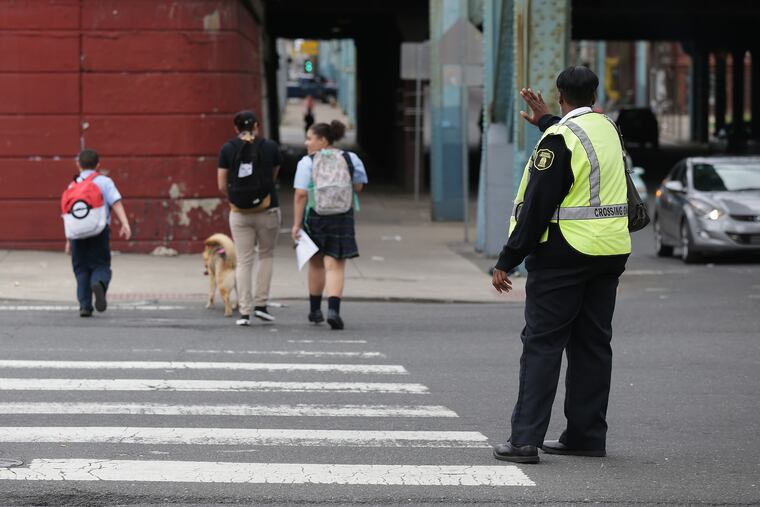My patients are kids caught in the middle of the opioid crisis. Who speaks for them?
We need to focus on the needs of toddlers and older kids forced to cope with the fallout of the opioid crisis in their families and communities.

As a pediatrician working in a community that has been called Philadelphia's epicenter of opioid addiction, I have been focused, of course, on how children are harmed by this crisis.
But not so much on the newborns struggling through painful withdrawal, with their high-pitched cries and trembling. Nor the teens, whose developing brains are particularly vulnerable to addictions of all kinds.
>>READ MORE: Babies addicted to opioids: A crisis crying for a count
My days are spent worrying about children stuck in the middle. I think about the toddler, already in his third foster home, whom I have cared for since he was taken away as an infant from a mother unable to look after him. I think about a second grader who found his father dead from an overdose. Or the fourth grader who needs a doctor's note excusing his absences from school – though his health is fine. He stayed home because he couldn't get his heroin-using mother out of bed, and didn't want to leave her alone.
One day while driving to work, I stopped at the intersection of Clearfield and Front Streets, a particularly desolate corner of North Philadelphia. A school-crossing guard held up traffic to make sure several children, book bags strapped to their shoulders, could get across the street safely.
Stumbling in the opposite direction was a glassy-eyed man, oblivious to the children gaping at him, and to the crossing guard's head-shaking disapproval.
The psychological and medical effects of the opioid epidemic on children who live in such neighborhoods has not been a major focus at a time when we are just trying to keep people alive and into treatment. Who are the children who need help dealing with the fallout of addiction? How many are there? How can we best help them?
A large report from Britain, "Hidden Harm," demonstrated that for every problem opioid user, an average of one child suffers some kind of adversity. A 2017 estimate in Philadelphia suggested that there are close to 70,000 heroin users – and Hidden Harm's one-to-one impact doesn't even count the indirect exposures such as the one I saw at Clearfield and Front Streets.
Nearly a third of children entering foster care in 2015 were placed there due at least in part to a parent's illicit drug use – an increase of nearly 50 percent since 2005. In Pennsylvania, a staggering 55 percent of child-placement cases are drug-related.
>>READ MORE: Love in the time of opioids: Adoption connects drug-exposed kids with new families
As we have learned through the seminal Adverse Childhood Experiences study, children who grow up in households where parents use drugs (which often goes hand-in-hand with abuse or neglect), or who are placed in foster care, suffer lifelong health consequences. Such children are more than twice as likely to develop cancer as an adult, have a 70 percent higher risk of cardiovascular disease, and are 10 times more likely to misuse drugs themselves. The pathways to these outcomes originate in early childhood through toxic stress and its weathering effect on the developing brain and body.
These are just a few of the medical costs of a childhood disrupted by this scourge. The psychological effects must be brought to light, child-by-child, family-by-family and block-by-block. Imagine being a child who must care for younger siblings – as well as parents in addiction – and then try to succeed in school.
What can be done?
Responding to this aspect of the opioid crisis requires a multi-level, child-centered approach that prioritizes the smallest victims. Effective treatment for parents will have major benefits for children and must be a priority of policy and practice. Including children in parental treatment, as well as considering the vital role of parents when considering criminal justice reform, must also be prioritized.
The Mayor's Task Force to Combat the Opioid Epidemic, established in 2017, has 18 important measures outlined – but it doesn't give nearly enough prominence to the plight of children. That must change.
Medicaid – the government health insurance program for just about all the families I care for — is the lifeline linking people to treatment. We must fight back against any efforts to reduce it.
Supporting organizations such as Prevention Point and New Kensington Community Development Corporation (NKCDC) can save lives, as can resources such as startyourrecovery.org, which finds treatment opportunities.
"Too many children of parents struggling with opioids will start life with odds stacked against them. Their urgent needs must be met now," Marian Wright Edelman, president of the Children's Defense Fund, said recently.
For 70,000 children in Philadelphia, this is that now.
Daniel R. Taylor, D.O., is an associate professor at Drexel University College of Medicine and director of community pediatrics and child advocacy at St. Christopher's Hospital for Children. The views and opinions expressed in this article belong solely to the author, and not necessarily to the author's employer and its affiliates.